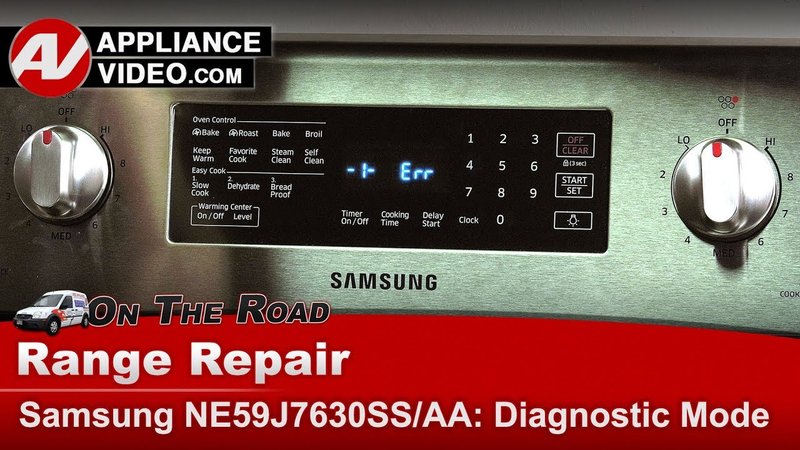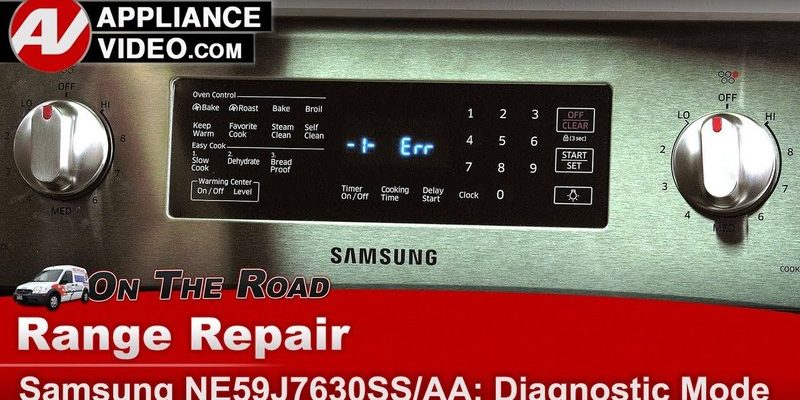
The E3 error is quite common in Samsung ovens, and it’s often related to issues with the temperature sensor. Imagine the sensor as your oven’s “thermostat.” If it’s malfunctioning, your oven can’t figure out how hot it is, which is obviously a problem when you’re trying to cook. But don’t panic — with a little bit of knowledge and regular maintenance, you can keep your oven running smoothly and avoid this error in the future. Let’s dive into how you can do just that.
Understanding the E3 Error Code
At its core, the E3 error code is a signal from your oven that there’s a problem with its temperature sensor. Think of the sensor like a fitness tracker for your oven’s internal temperature. If it can’t read the temperature correctly, it’s like trying to exercise without knowing your heart rate — you’re likely to run into issues. The E3 code usually appears when the sensor is defective, incorrectly installed, or there’s a loose connection somewhere in the oven’s circuitry.
Here’s the deal: when the sensor isn’t working properly, your oven can’t regulate its temperature effectively. This can lead to uneven cooking or, worse, no cooking at all if the oven refuses to heat up. You might notice that your cakes aren’t rising, or your roast chicken is coming out raw in the middle. These are classic symptoms of possible temperature sensor issues. Understanding these signals early can save you a lot of hassle and help you address the issue before it turns into a bigger problem.
Prevention here involves regular checks of the sensor and the surrounding connections. Make sure the sensor’s wire harness is securely attached and not damaged. Also, ensure that the sensor is properly placed inside your oven. By doing these simple checks, you can often stop the E3 error before it even starts. It’s like checking the air in your tires before a long drive — a small step that can prevent major problems.
Regular Maintenance for Your Samsung Oven
Just like you wouldn’t drive your car without the occasional tune-up, your oven requires regular maintenance to prevent issues like the E3 error. First things first: keep your oven and its components clean. A dirty oven can lead to a host of problems, not least of which is affecting the accuracy of the temperature sensor. Grease and grime can interfere with your oven’s ability to monitor and maintain the right temperature.
You might be wondering how often you need to clean it. As a rule of thumb, aim for a deep clean every three months. Remove any built-up food debris or grease, paying close attention to the areas around the temperature sensor. You can use a mild detergent and a soft cloth to wipe these areas, ensuring that no residue is left behind. This is a bit like brushing and flossing your teeth regularly to prevent cavities.
In addition to regular cleaning, check the condition of your oven’s wiring and connections. Loose or corroded wires can lead to sensor malfunctions, which might trigger that annoying E3 code. If you spot any damaged wires, it’s important to address them immediately. Consider this a bit like keeping an eye on your home’s electrical outlets; a little attention here can prevent a lot of hassle later.
What To Do If the E3 Error Occurs
If the dreaded E3 error pops up despite your best efforts, don’t worry — you can take steps to remedy the situation. First, try a simple reset of your oven. Much like restarting your computer can fix a host of minor issues, resetting the oven can sometimes clear the error. Unplug the oven, wait a few minutes, and then plug it back in. If the error persists, it might be time to look a bit deeper.
Check the temperature sensor to make sure it’s securely in place and not damaged. If necessary, you might need to replace it. This is a bit like having to swap out a faulty tire for a new one — it’s not ideal, but it’s sometimes the only way to get back on the road. Replacement sensors are generally inexpensive and can be installed with a bit of DIY know-how, though you might prefer to call in a professional if you’re not comfortable doing it yourself.
Additionally, make sure there are no obstructions affecting the sensor’s ability to accurately gauge the oven’s temperature. Sometimes, rearranging the racks or ensuring there’s proper space around the sensor can do wonders. Like giving an artist the right amount of room to work, space can ensure your oven’s sensor functions effectively.
Preventative Tips To Avoid Future Errors
In order to prevent the E3 error code from rearing its ugly head again, consistent maintenance and mindful usage are key. Start by familiarizing yourself with your oven’s manual; it’s the best resource for understanding how your specific model should be maintained and operated. Think of the manual as your oven’s biography – it tells you everything you need to know about its quirks and preferences.
Moreover, avoid placing aluminum foil directly on the racks or the bottom of the oven. This can obstruct airflow and affect temperature regulation. Imagine trying to swim with a heavy coat on — it just doesn’t work properly. Ensuring there’s enough space for air to circulate will help keep temperatures even throughout cooking.
Lastly, consider scheduling a professional check-up for your oven once a year. Just like you’d visit the doctor for an annual physical, a professional can spot potential issues before they develop into full-blown problems. They have the tools and know-how to keep your oven in tip-top shape, ensuring that it runs smoothly for all your culinary adventures.
By following these tips and staying proactive with your oven maintenance, you can greatly reduce the chances of encountering that pesky E3 error. Here’s to hassle-free cooking and baking adventures ahead!
